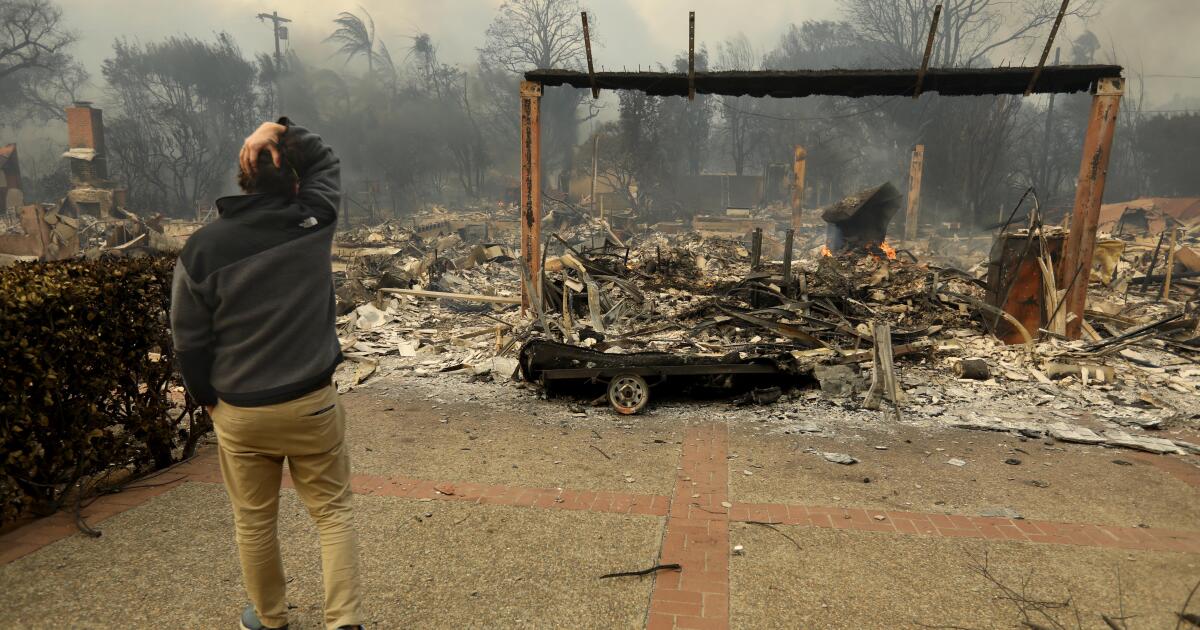Authorities Caution Against Sifting Through Debris at Fire-Ravaged Properties
The Dangers of Sifting Through Toxic Debris
With residents anxious to return to their fire-ravaged properties, authorities are warning of the dangers of sifting through the toxic wreckage — especially without protective gear. Hazardous items in the fire zones can include batteries, ammunition, propane tanks, pesticides, and cleaning products that can become unsafe when exposed to heat and fire. Harmful chemicals can be present in the ash in charred neighborhoods, according to experts.
The Risks of DIY Debris Removal
In other words, it’s not a good idea to haul a dumpster to the destruction zone and clean up the debris yourself. The soil has been heavily impacted by a lot of pollutants, and the ash includes a lot of different byproducts of construction. Mark Pestrella, L.A. County’s public works director, emphasized that it’s not safe to come into contact with such materials without wearing personal protective equipment.
The Official Response
The U.S. Army Corps of Engineers, which is overseeing debris removal in fire zones, began the process this week of surveying the charred neighborhoods along Pacific Coast Highway in Malibu. Col. Eric Swenson with the Army Corps said the debris removal process could take up to 18 months to complete. "We want to get this place back into your hands clear of all the public health hazards so that you can rebuild your life and your livelihood," Swenson said.
What Residents Can Do
Residents considering signing up for the Army Corps of Engineers private property debris removal program, which is offered at no cost under the Federal Emergency Management Agency, should opt in as soon as possible, Swenson said. Property owners can also hire private companies to conduct the debris removal and submit an insurance claim for reimbursement. "There is risk to returning to your property," Swenson said. "There will be nails everywhere, if you had a basement it may be hidden. There will be burned timbers, which have no structural strength in them. There are hazards out there."
Conclusion
Residents are urged to exercise caution and patience as the debris removal process is completed. It’s crucial to prioritize public health and safety above all else. By waiting until the hazardous waste has been removed and the area is deemed safe, residents can ensure a smoother and safer rebuilding process.
FAQs
Q: How long will the debris removal process take?
A: The process could take up to 18 months to complete, according to the U.S. Army Corps of Engineers.
Q: Can I remove debris from my property myself?
A: No, it’s not recommended. The debris may contain hazardous materials, and it’s not safe to remove it without proper protective equipment and techniques.
Q: What can I do to prepare for debris removal?
A: You can sign up for the Army Corps of Engineers private property debris removal program or hire a private company to conduct the removal. You can also submit an insurance claim for reimbursement.
Q: When can I return to my property?
A: You will likely be allowed to return to your property once the hazardous waste has been removed and the area is deemed safe. This may take a few weeks or months, depending on the location and severity of the fire.


